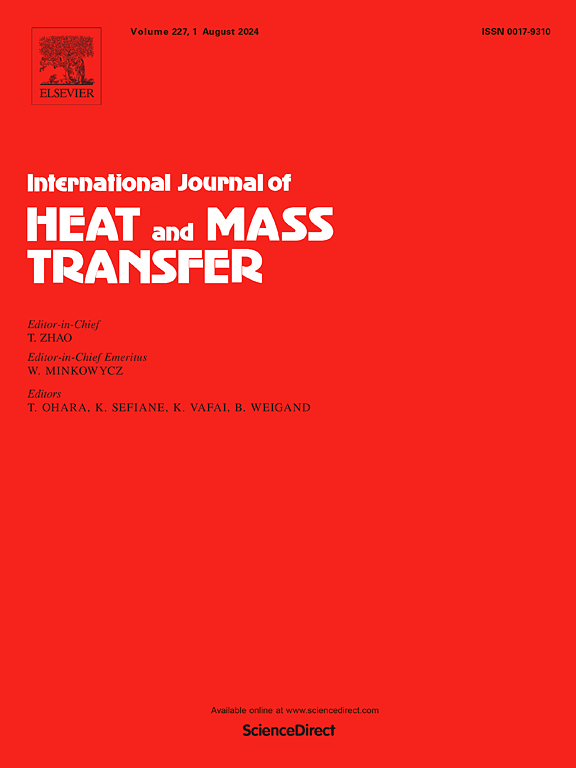Heat transfer of impinging sweeping jets: Influence of nozzle-to-target spacing and feedback channel minimum passage width
IF 5
2区 工程技术
Q1 ENGINEERING, MECHANICAL
International Journal of Heat and Mass Transfer
Pub Date : 2025-02-10
DOI:10.1016/j.ijheatmasstransfer.2025.126773
引用次数: 0
Abstract
Infrared Thermography and the heated thin foil heat flux sensor are employed to experimentally investigate the heat transfer characteristics of sweeping jets impinging on a flat surface. Multiple nozzle-to-target spacings ( and 10, where represents the width of the square exit nozzle throat) and feedback channel minimum passage widths ( and 0) are analyzed to evaluate the effects of these two parameters on the convective heat transfer of the investigated jets. The Reynolds number is set to for all the experiments performed. To assess the heat transfer behavior of the studied sweeping jet device, both time-averaged and phase-averaged analyses are conducted. This study demonstrates that the convective heat transfer of the impinging sweeping jet affects a broader area of the foil as the nozzle-to-target spacing increases, whereas the opposite effect is observed when reducing the minimum passage width of the feedback channels. Furthermore, the time-averaged analyses reveal that for , compared to the corresponding steady jet, sweeping jets enhance the convective heat transfer close to the impingement center of the target surface; instead, for the steady jet exhibits superior heat transfer performance near the stagnation region, while the sweeping jets generate a more uniformly distributed region of maximum convective heat transfer. Additionally, the analysis of the phase-averaged Nusselt number distributions across the target surface reveals that the maximum convective heat transfer region is situated on its uphill side, close to the stagnation point, resembling the behavior of inclined impinging jets.
求助全文
约1分钟内获得全文
求助全文
来源期刊
CiteScore
10.30
自引率
13.50%
发文量
1319
审稿时长
41 days
期刊介绍:
International Journal of Heat and Mass Transfer is the vehicle for the exchange of basic ideas in heat and mass transfer between research workers and engineers throughout the world. It focuses on both analytical and experimental research, with an emphasis on contributions which increase the basic understanding of transfer processes and their application to engineering problems.
Topics include:
-New methods of measuring and/or correlating transport-property data
-Energy engineering
-Environmental applications of heat and/or mass transfer

 求助内容:
求助内容: 应助结果提醒方式:
应助结果提醒方式:


